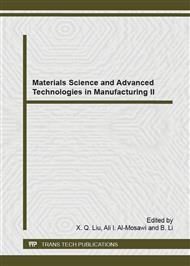p.232
p.237
p.241
p.249
p.254
p.260
p.265
p.270
p.275
Calibration of K&C Concrete Model for UHPC in LS-DYNA
Abstract:
Karagozian & Case Concrete (KCC) model in LS-DYNA is a parameter automatically generated material model for simulation of concrete. By giving the unconfined compressive strength of the concrete material, all other constitutive material parameters will be generated by the model. It is a valuable concrete model for users who have no laboratory data or conduct tentative simulations. However, the automatically generated parameters will induce error when the concrete material behavior deviates from the regular behavior. In this research, a calibration method is introduced to show a simple way for generating input material parameters of ultra-high performance concrete (UHPC). Empirical equations for triaxial compressive tests are used here for the calibration. The calibrated model is firstly checked by the simulation of uniaxial compression test with one element and the results reveal that the calibrated model shows a better agreement with the test data than the parameter automatically generated KCC model.
Info:
Periodical:
Pages:
254-259
Citation:
Online since:
December 2014
Keywords:
Price:
Сopyright:
© 2015 Trans Tech Publications Ltd. All Rights Reserved
Share:
Citation:


